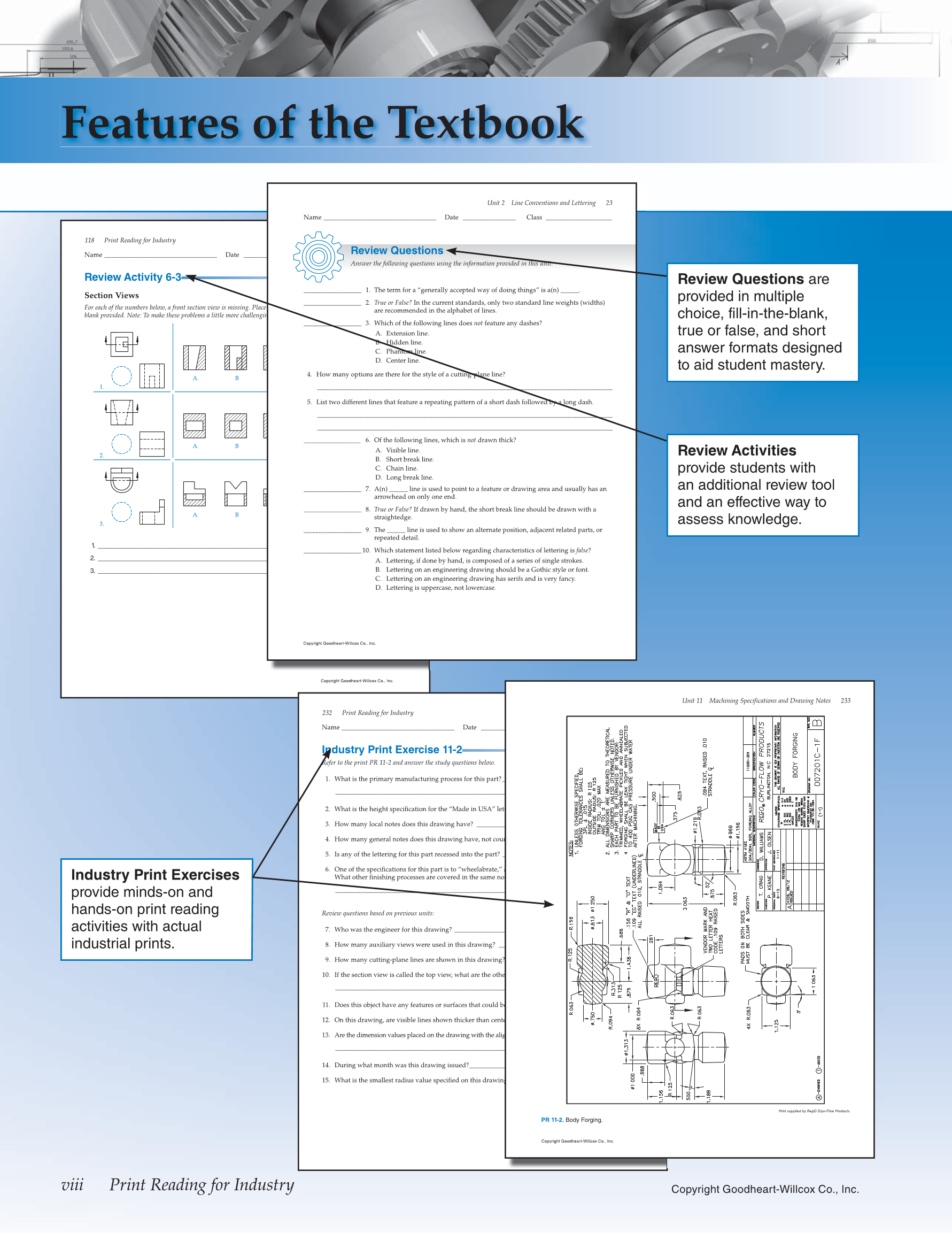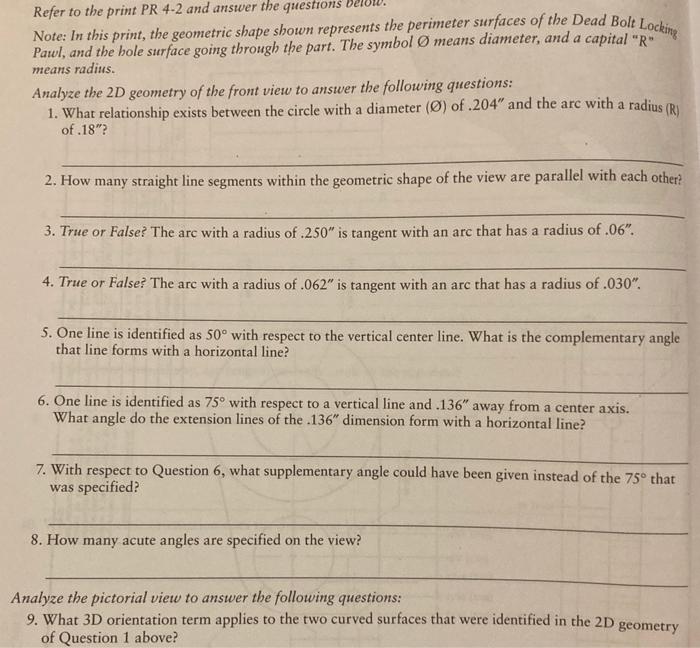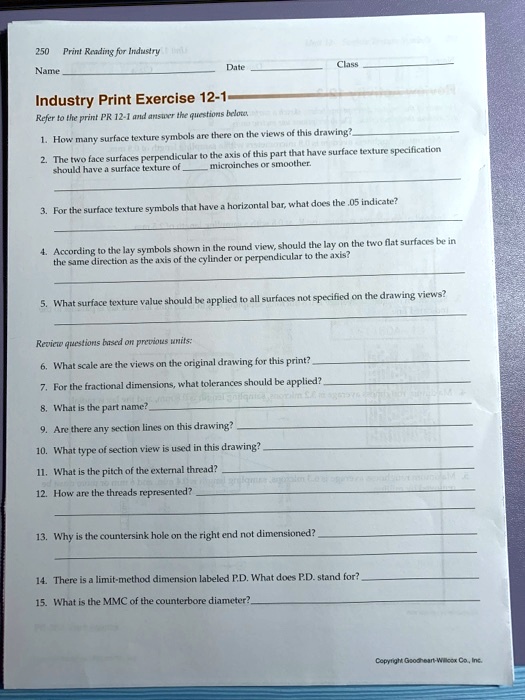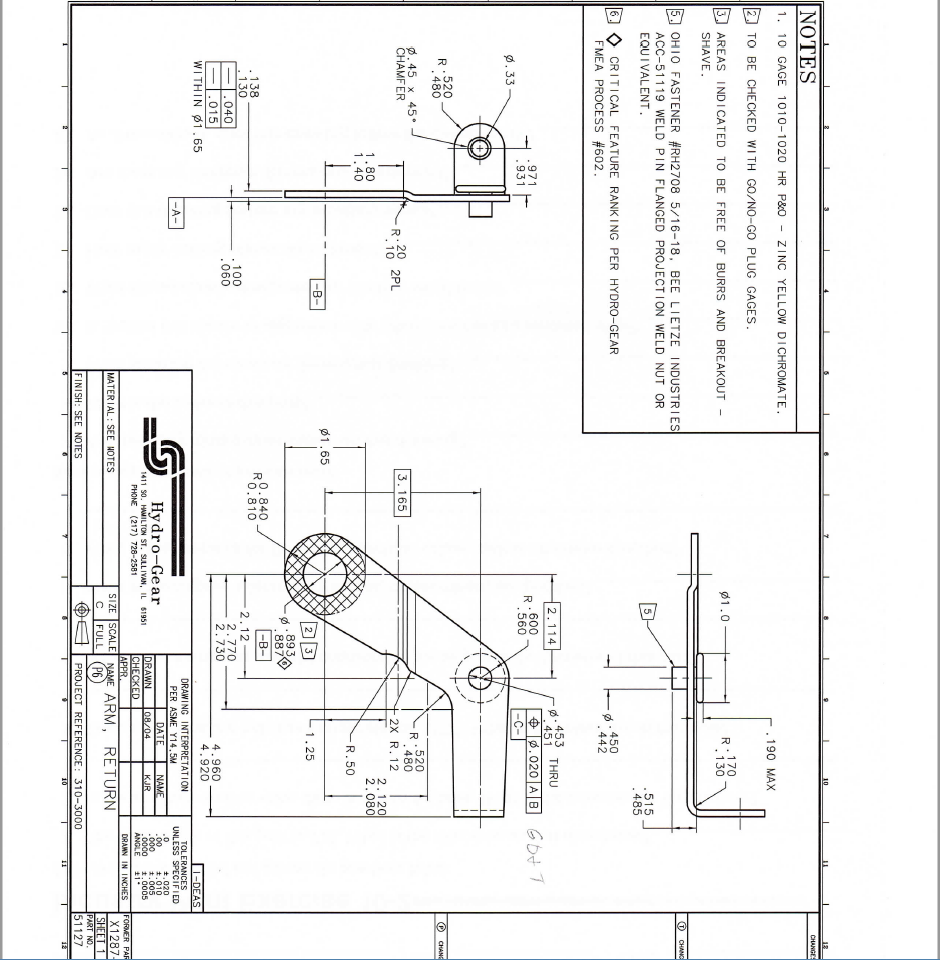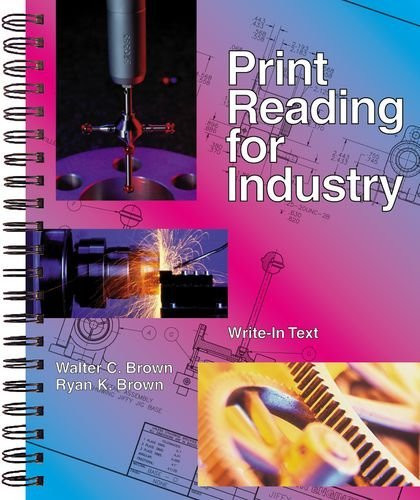Print Reading For Industry Review Activity 10 1
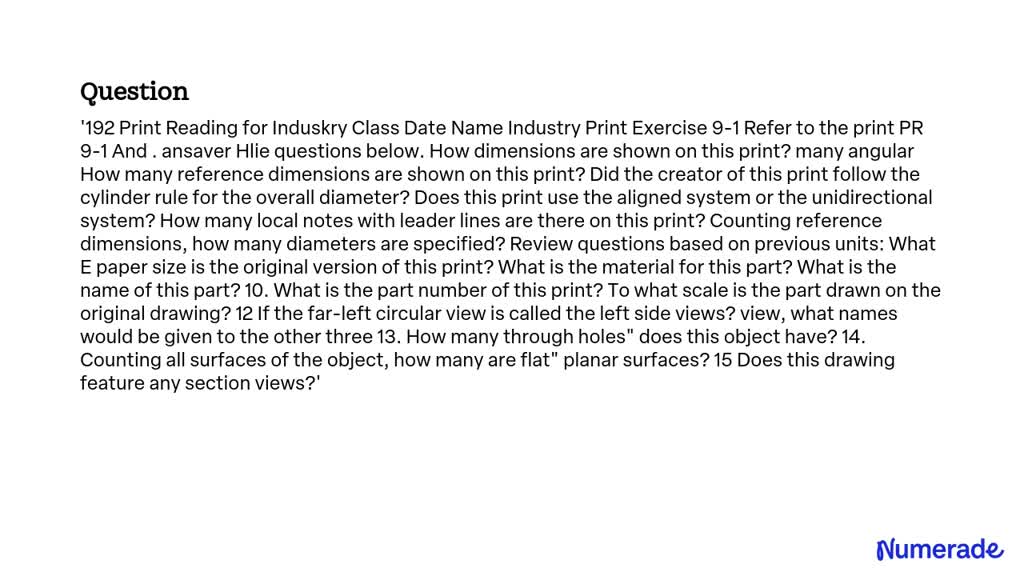
The air crackled with anticipation, a mix of nervous energy and quiet determination hanging heavy in the brightly lit workshop. Blueprints, crisscrossed with lines and symbols, lay spread out across workbenches, each a cryptic map leading to a tangible creation. Students huddled in small groups, heads bent low, their fingers tracing lines, debating interpretations, and deciphering the silent language of engineering drawings. The future of manufacturing, one line at a time, was being decoded.
At its core, Print Reading for Industry Review Activity 10.1 is designed to bridge the gap between theoretical knowledge and practical application, ensuring that aspiring tradespeople can confidently interpret and utilize technical drawings in real-world industrial settings.
The activity focuses on honing skills crucial for successful careers in fields like manufacturing, construction, and engineering, ultimately contributing to a more skilled and efficient workforce.
The Genesis of Print Reading: A Foundation for Innovation
The ability to read and interpret technical drawings, often referred to as blueprints or prints, is not a new skill. It's a cornerstone of industrial progress, dating back centuries. From the grand cathedrals of Europe to the complex machinery of the Industrial Revolution, detailed drawings have served as the essential communication tool between designers, engineers, and builders.
These drawings transcend language barriers, providing a standardized visual representation of an object or structure, complete with precise dimensions, materials specifications, and assembly instructions. As technology advanced, so too did the complexity and sophistication of these drawings, demanding a higher level of understanding from those who worked with them.
Today, with the rise of Computer-Aided Design (CAD) and Building Information Modeling (BIM), the nature of technical drawings is evolving. But the fundamental principle remains the same: conveying critical information accurately and unambiguously.
Why Print Reading Matters Now More Than Ever
In an age of increasing automation and specialization, the ability to read and interpret technical drawings is more important than ever. While machines can perform repetitive tasks with precision, humans are still needed to understand the overall design intent, troubleshoot problems, and adapt to changing conditions. A skilled print reader can identify potential errors, optimize processes, and ensure that projects are completed safely and efficiently.
The demand for skilled workers who can read and interpret technical drawings is consistently high across various industries. According to recent data from the Bureau of Labor Statistics, the manufacturing and construction sectors alone employ millions of individuals who rely on print reading skills in their daily work.
From machinists and welders to electricians and plumbers, the ability to understand and follow technical drawings is essential for success in these trades.
Activity 10.1: A Deep Dive into Practical Application
Print Reading for Industry Review Activity 10.1 is structured to provide a comprehensive and hands-on learning experience. It covers a wide range of topics, including orthographic projection, dimensioning, tolerancing, and geometric dimensioning and tolerancing (GD&T). GD&T is a symbolic language used on engineering drawings and models that defines the allowable variation in the form, orientation, and location of part features.
The activity typically involves a series of exercises and simulations that challenge students to apply their knowledge to real-world scenarios. For example, students may be asked to interpret a complex assembly drawing, identify critical dimensions, and determine the appropriate materials and manufacturing processes.
They may also be required to create their own technical drawings based on specific design requirements.
One key aspect of Activity 10.1 is its emphasis on collaboration and teamwork. Students are often encouraged to work together to solve problems and share their insights. This collaborative approach not only enhances their learning experience but also prepares them for the collaborative environment they will encounter in the workplace.
The activity also incorporates the use of industry-standard tools and technologies, such as CAD software and digital measuring instruments. This exposure to real-world tools helps students develop the skills and confidence they need to succeed in their chosen careers.
Instructors provide guidance and feedback throughout the activity, helping students to identify areas where they need to improve and to develop strategies for overcoming challenges.
The Impact on Students and the Industry
The impact of Print Reading for Industry Review Activity 10.1 extends far beyond the classroom. By equipping students with the skills and knowledge they need to succeed in the trades, the activity helps to build a stronger and more competitive workforce. Graduates who have completed the activity are better prepared to enter the workforce and contribute to their employers' success.
Moreover, the activity helps to promote a culture of continuous learning and improvement within the industry. By encouraging students to stay up-to-date on the latest technologies and best practices, the activity helps to ensure that the industry remains at the forefront of innovation. Apprenticeships often include a thorough print reading component, underlining its importance.
The activity also plays a vital role in promoting safety in the workplace. By teaching students how to read and interpret technical drawings accurately, the activity helps to prevent errors and accidents that could lead to injuries or fatalities. A clear understanding of the drawing ensures the parts are properly fabricated and assembled.
Looking Ahead: The Future of Print Reading
As technology continues to evolve, the field of print reading will undoubtedly continue to change. New tools and techniques will emerge, and the demands on skilled workers will become even greater. However, the fundamental principles of print reading will remain the same: accurately conveying critical information and ensuring that projects are completed safely and efficiently.
One key trend to watch is the increasing integration of digital technologies into the print reading process. CAD software, BIM, and augmented reality (AR) are already transforming the way that technical drawings are created, shared, and interpreted. As these technologies become more sophisticated and accessible, they will likely play an even greater role in the future of print reading.
Another important trend is the growing emphasis on sustainability and green building practices. As the world becomes more aware of the environmental impact of construction and manufacturing, there will be a greater demand for workers who can read and interpret technical drawings that incorporate sustainable design principles. This includes understanding specifications for energy-efficient materials, renewable energy systems, and water conservation technologies.
The key to success in the future of print reading will be a combination of technical skills and critical thinking abilities. Workers will need to be able to not only read and interpret technical drawings but also to analyze them critically, identify potential problems, and develop creative solutions. This requires a strong foundation in mathematics, science, and engineering, as well as a willingness to learn and adapt to new technologies.
Continuous education and training will be essential for staying ahead in this rapidly evolving field.
A Final Reflection
As the workshops empty and the blueprints are carefully rolled up, there's a sense of accomplishment in the air. Print Reading for Industry Review Activity 10.1 is more than just an exercise in deciphering lines and symbols. It's an investment in the future, a step toward building a more skilled, efficient, and innovative workforce. It is a testament to the enduring power of communication, of understanding, and of the human capacity to create.
The ability to translate those intricate lines on paper into tangible realities, brick by brick, weld by weld, is a skill that will continue to be valued for generations to come. As one student, Maria Rodriguez, put it, "It's like learning a secret language that unlocks the potential to build anything." And in that secret language lies the power to shape the world.
